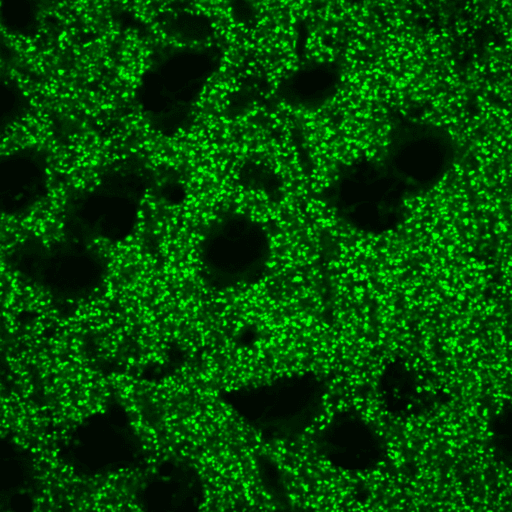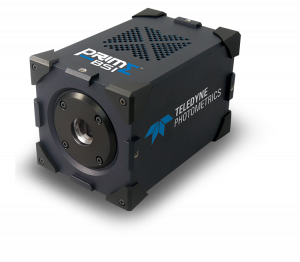Spinning Disk Confocal at University of Edinburgh
Dr. Emma Sigfridsson
Centre for Clinical Brain Sciences, University of Edinburgh, UK
Background
The group of Professor Seth Grant are interested in whole-brain synaptome mapping with an aim to understand more about how synaptic proteins are distributed and the role the molecular heterogeneity of synapses plays in health and brain disease.
There are more than 1000 genes encoding proteins in the excitatory postsynaptic density alone, and the group aims to catalog as many synaptic proteins and protein subtypes in both excitatory and inhibitory pre and post-synaptic densities.
The group mainly works with fixed mouse brain sections that contain genetically-encoded fluorescent synaptic proteins. So far, the group has categorized two proteins: PSD95 and SAP102, both found in excitatory postsynaptic densities. They have monitored the changes in the distribution of these proteins throughout different stages of development and aging in mice.
The group is also working to map the synaptome of models of disease as there is a link between mutations in the genes encoding proteins found in the postsynaptic density of excitatory synapses and neuropsychiatric and neurodevelopmental disorders in humans.
In addition, the group looks at human post-mortem tissue using immunohistochemistry to investigate synaptic proteins in the human brain and in the context of human neurodegenerative diseases such as Alzheimer's.

Figure 1: Fixed neural sample from a mouse with enhanced green fluorescent protein
(eGFP) tagged to postsynaptic density protein 95 (PSD-95), taken with the Prime BSI.
Challenge
The Grant group was previously using an Andor XD Revolution Spinning Disk system with an EMCCD camera. The main issue they faced was speed and throughput, partly due to the small imaging FOV and long exposure times needed for certain fluorophores.
The group found it necessary to image using a 100X objective in order to obtain maximum resolution. However, the brain slices are very large, around 16 mm x 8 mm in area, thus imaging at high magnification with limited FOV was very time-consuming. The FOV of the EMCCD is ~11 mm diagonal, however, the FOV is further restricted by using an additional 2x magnification changer to achieve Nyquist imaging with the large pixels of the EMCCD. With this small FOV, imaging whole coronal or sagittal sections of mouse brains can take more than 10 hours to image just two channels.
The group also found signal levels of certain fluorophores challenging. For example, they use the Venus YFP fluorophore to visualize an activity dependant protein, Arc. The combination of a weak fluorophore and Arcs low-level baseline expression posed an imaging challenge.
The biggest differences we have seen [with the Prime BSI] are the increases in speed and signal to noise ratio.
Dr. Emma Sigfridsson
Solution
The group is now using dual Prime BSI cameras on a Nikon Ti2 and Spinning Disk system. Dr. Sigfridsson told us "The speed is much improved in the new system. Depending on the settings and the fluorophores, we are now running at around 2-3 hours for a sample compared to the previous 10 hours. When we use the second camera, we can do it in half the time again."
Dr. Sigfridsson went on to say, "One of the selling points for the BSI was that we didn't need to use the 2x magnification to reach Nyquist. The Prime BSI has the ideal pixel size to achieve Nyquist using the 100X objective, whilst also maximizing imaging area."
Dr. Sigfridsson also stated that, "The biggest differences we have seen are speed and the increase in signal to noise. The EMCCD looks messier because you have additional noise from the multiplication process, which we no longer have with the Prime BSI."

Learn More About The Prime BSI